Flapper, bronze, galalith and Marquinia marble sculpture, 1930s
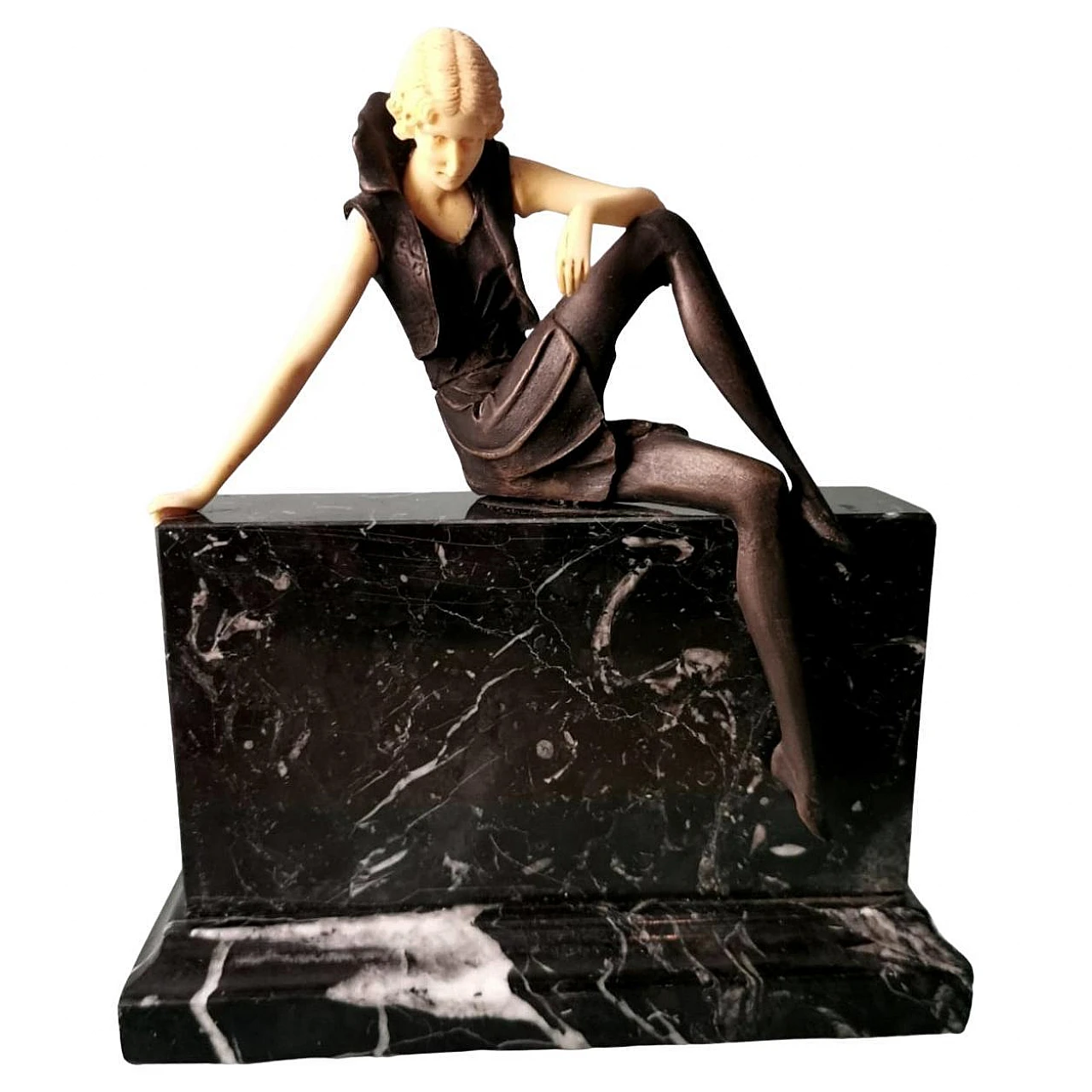
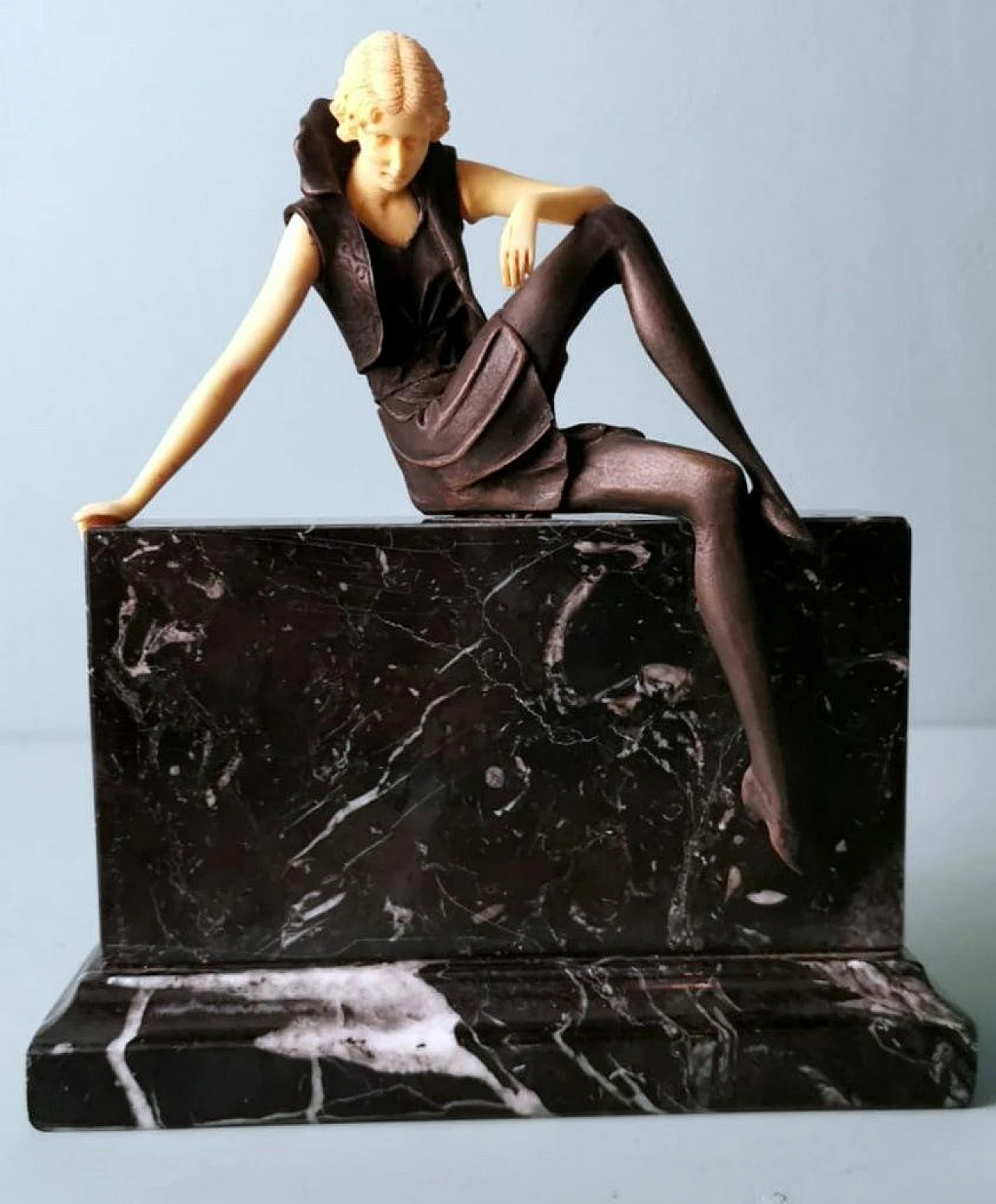

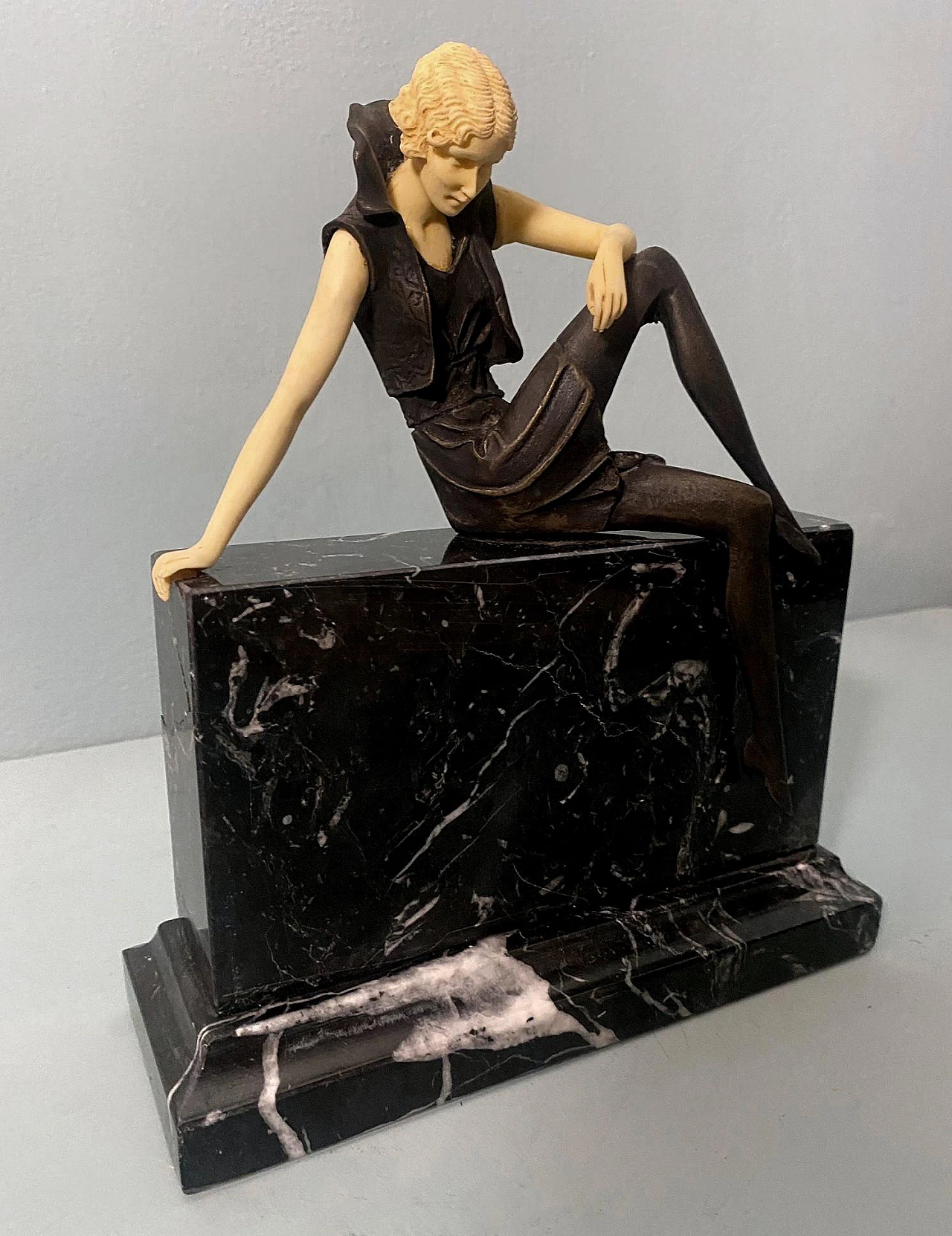
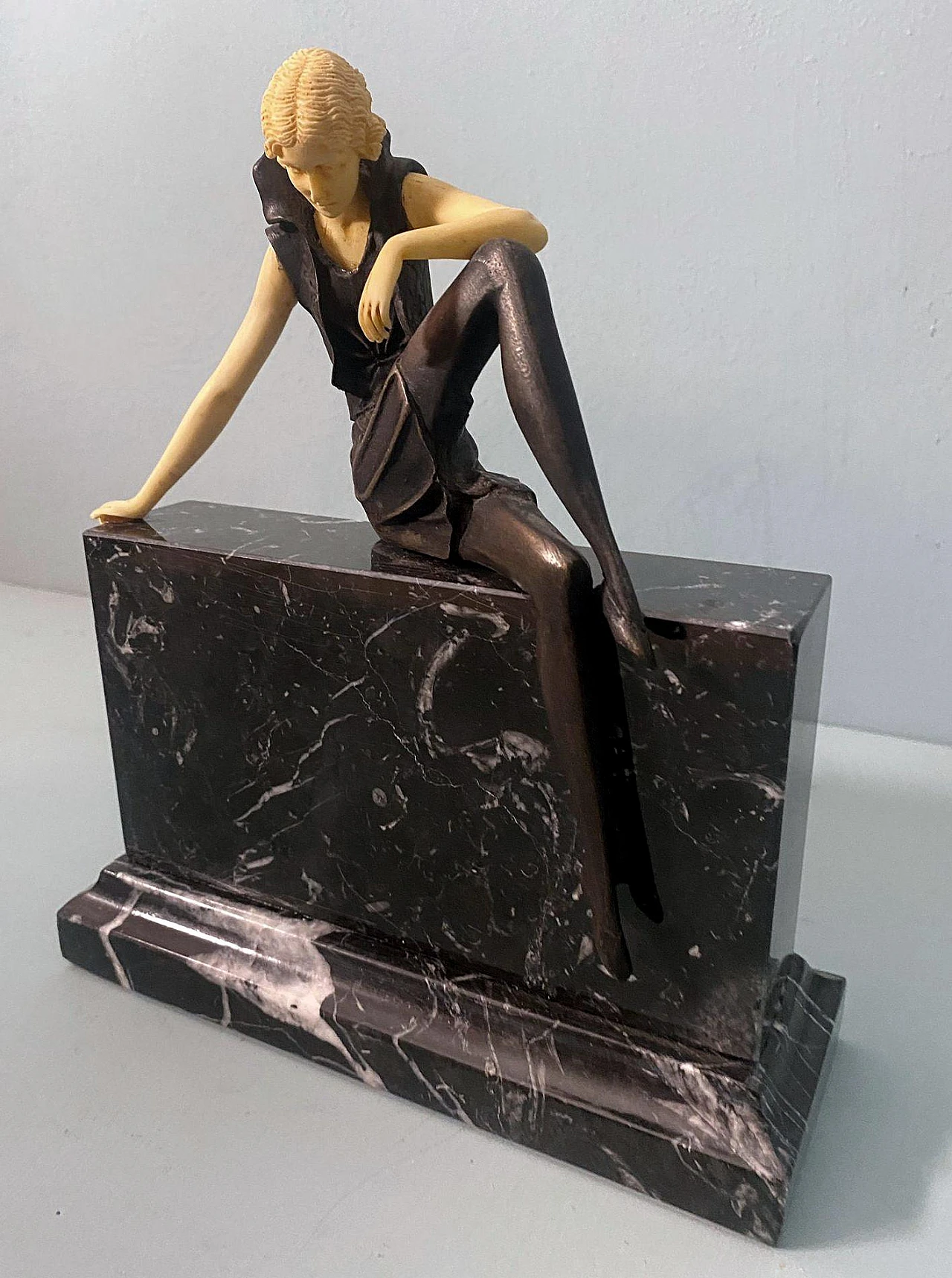
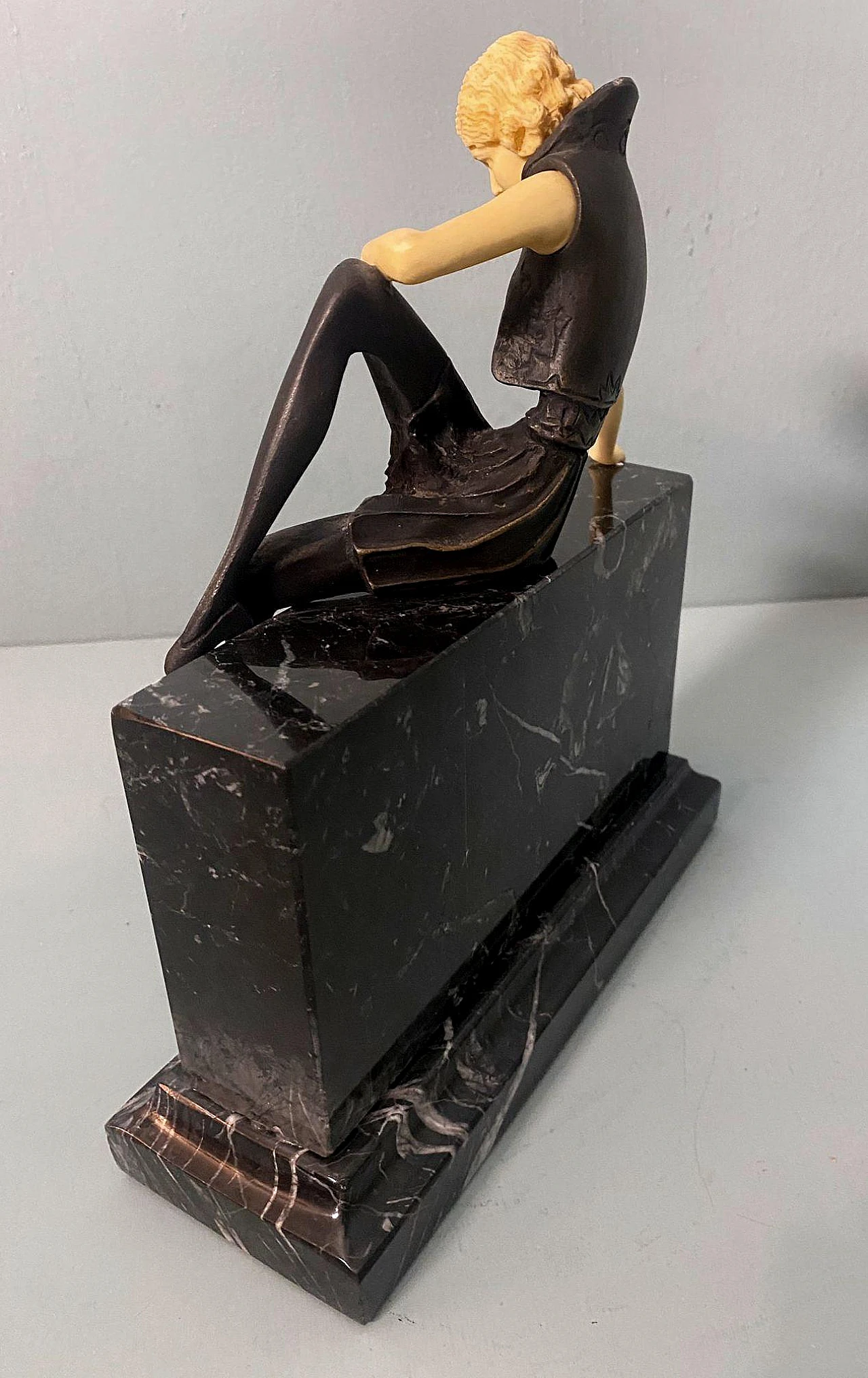

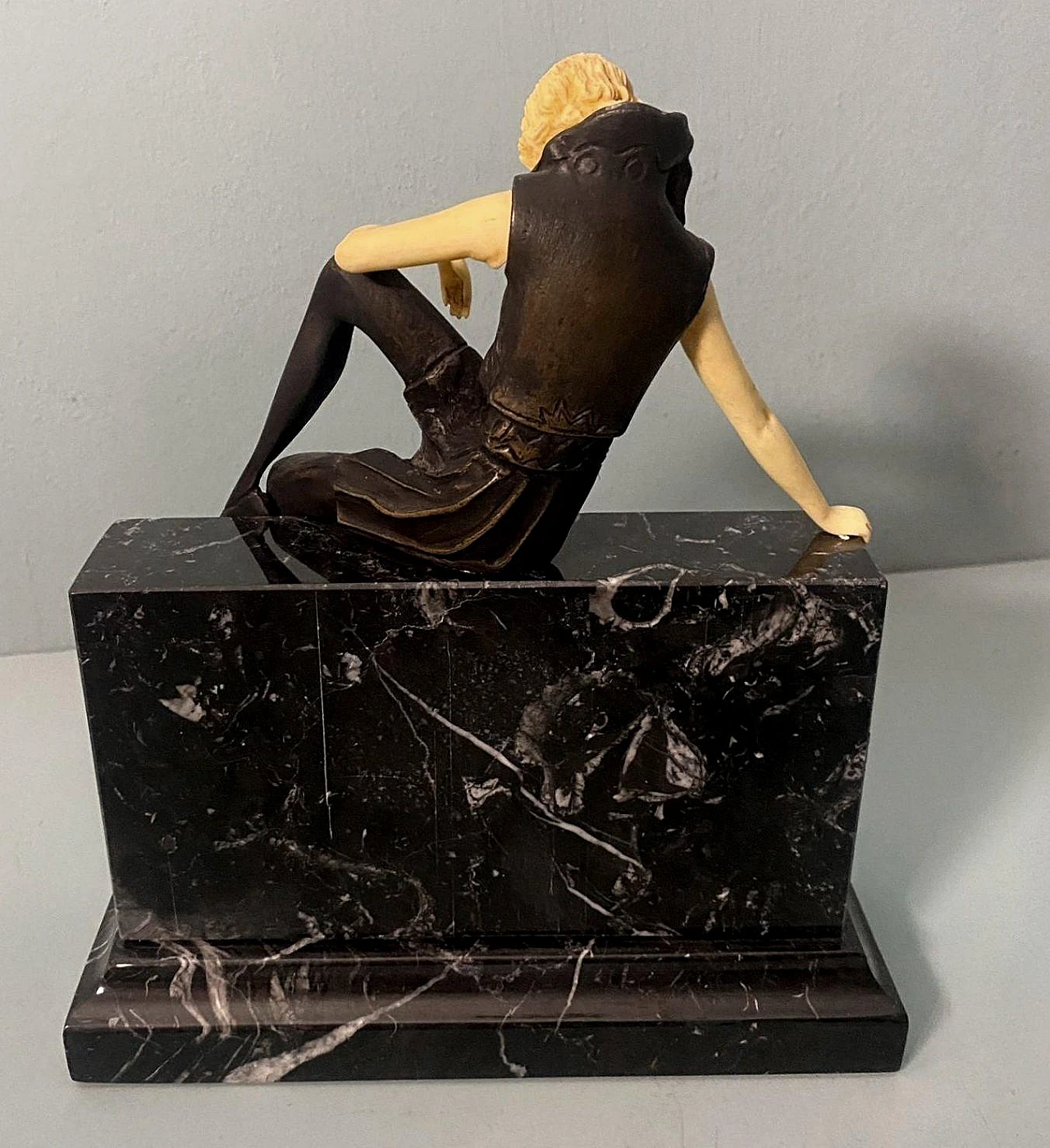
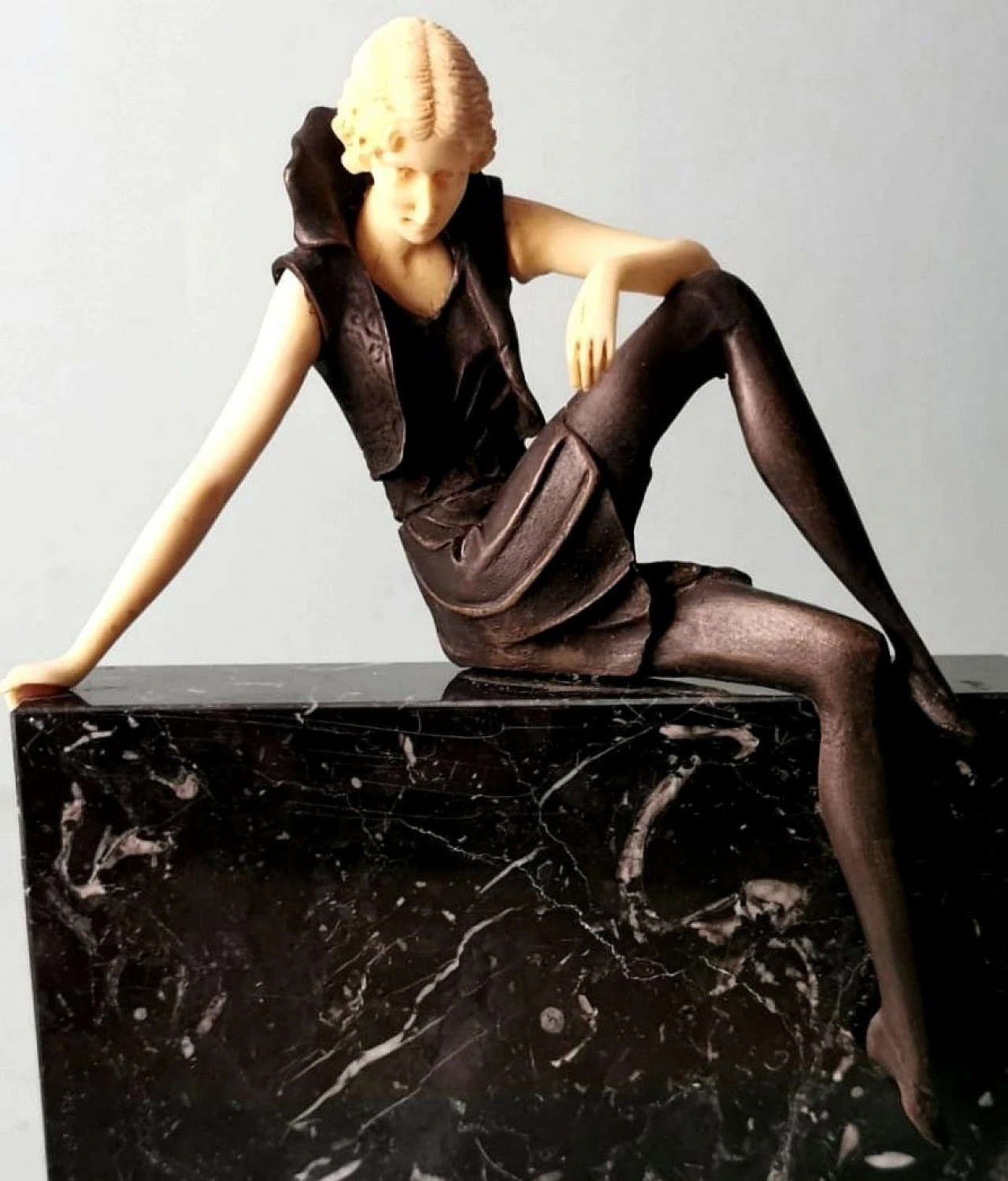

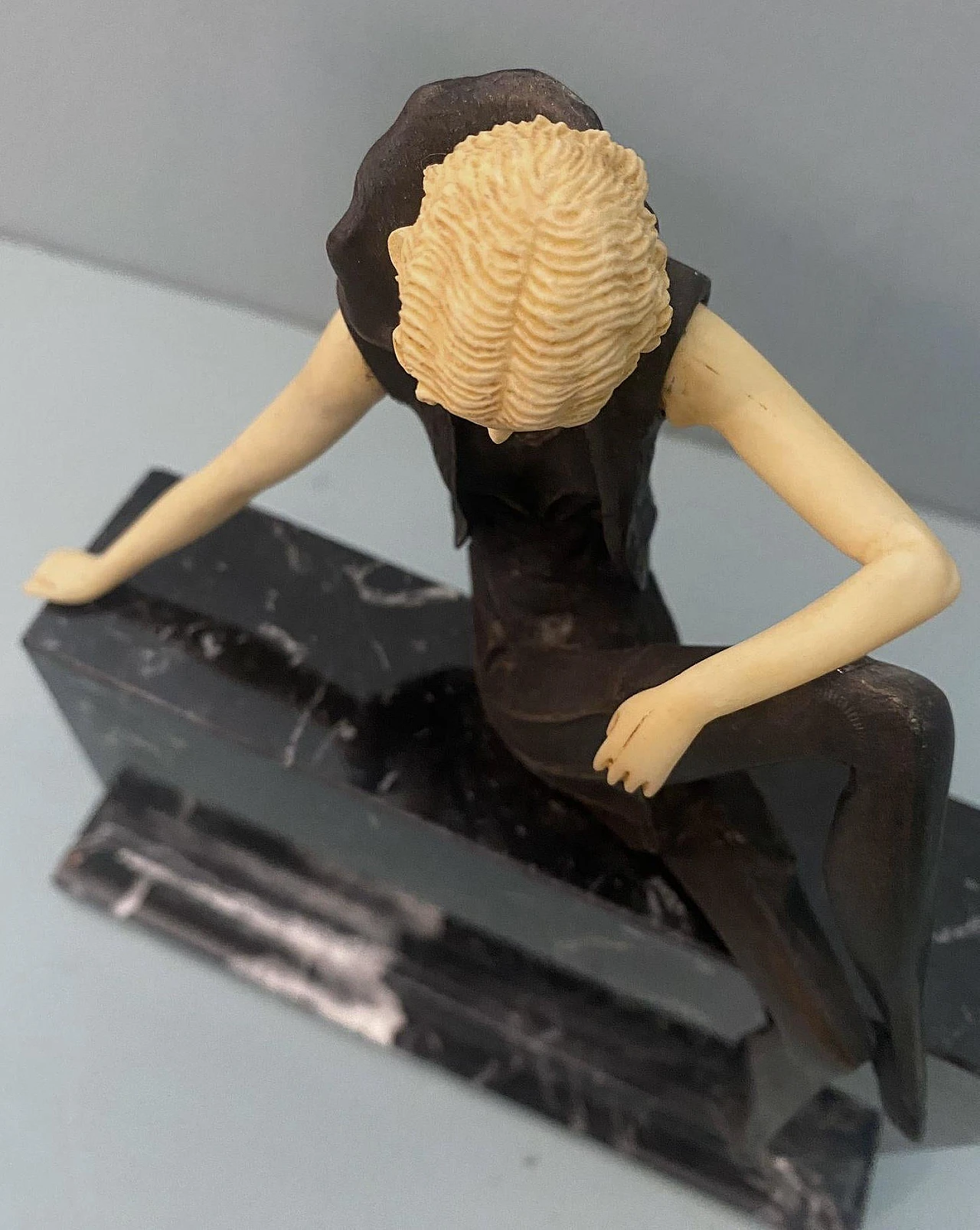
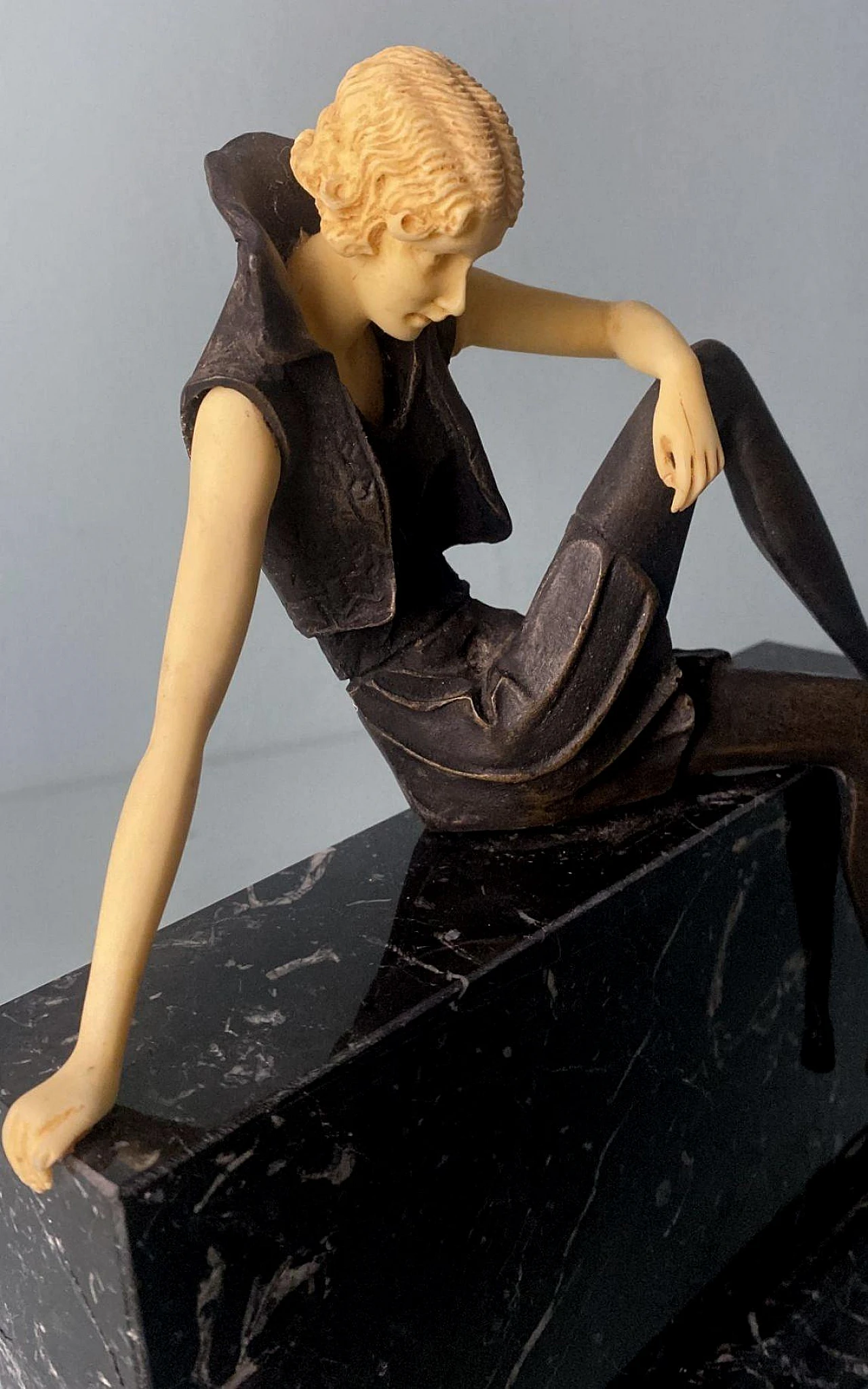
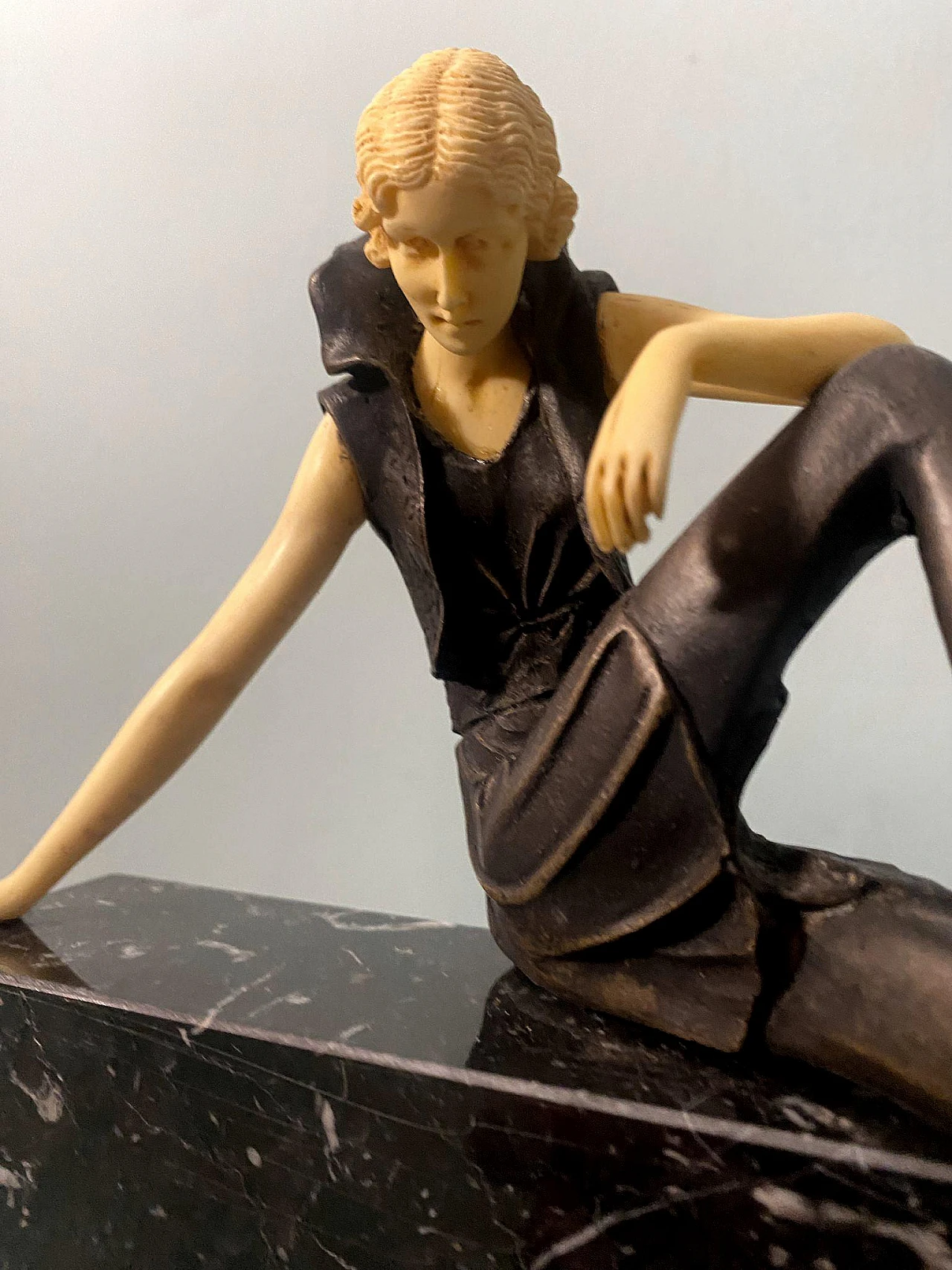

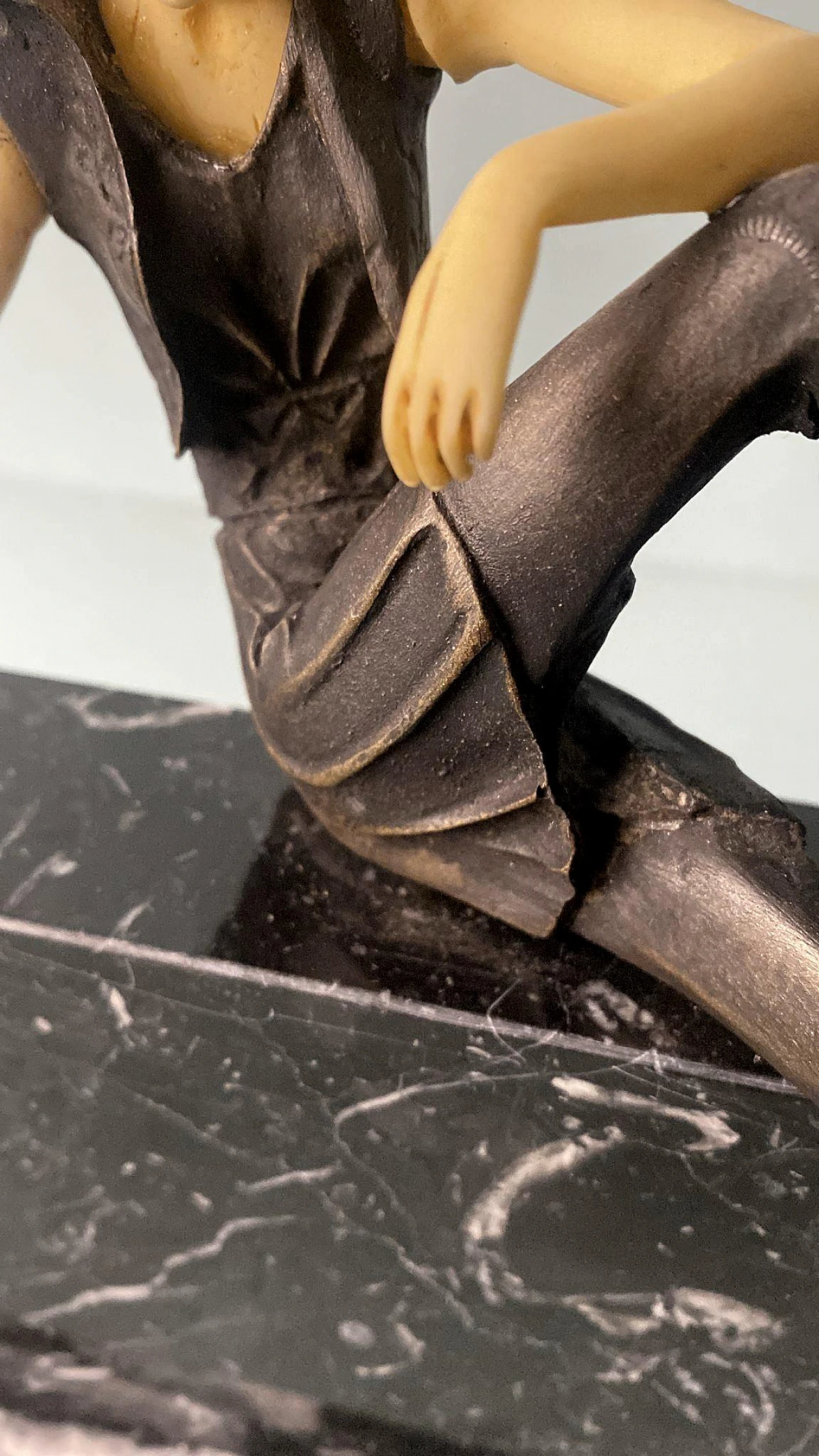
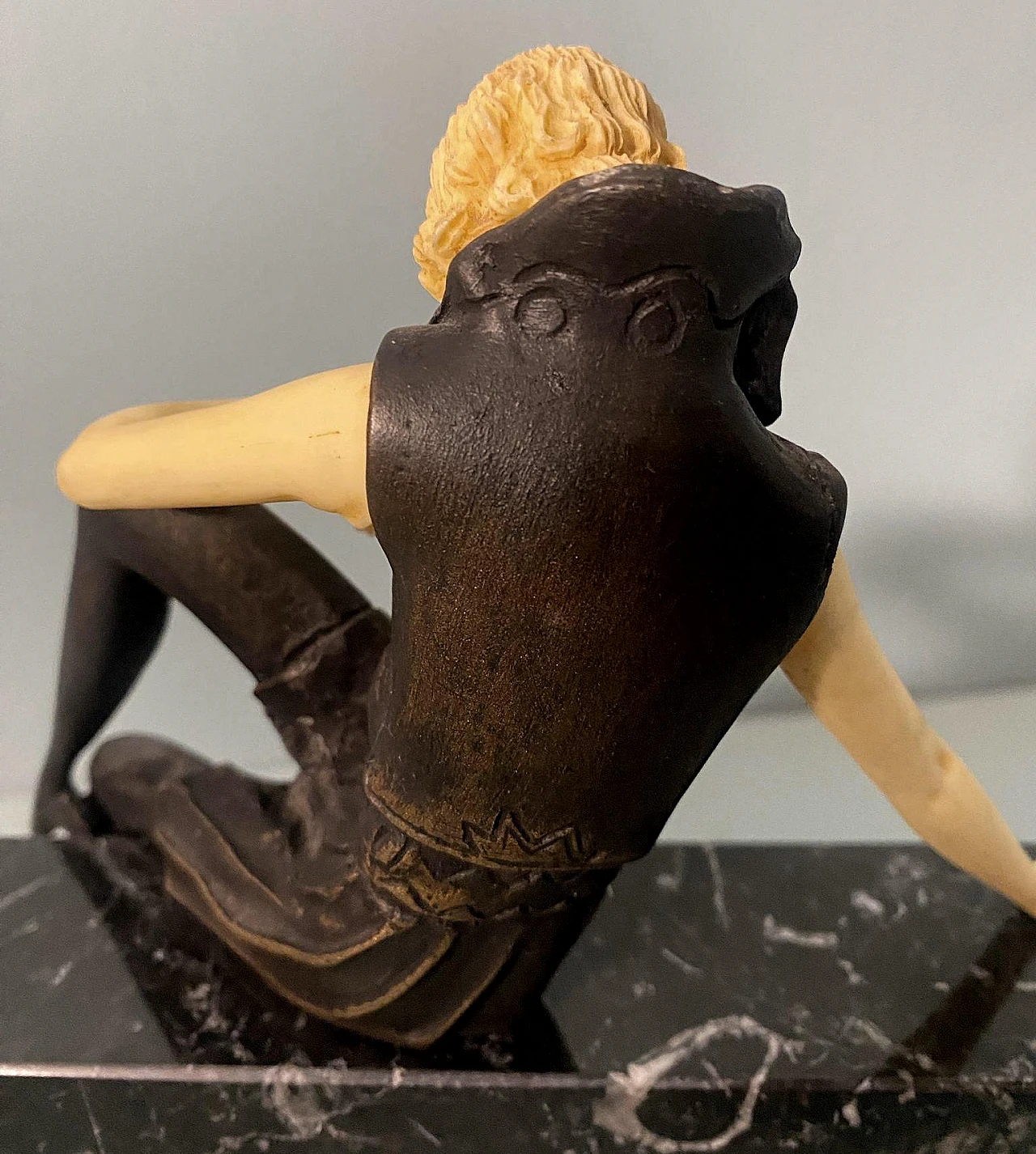
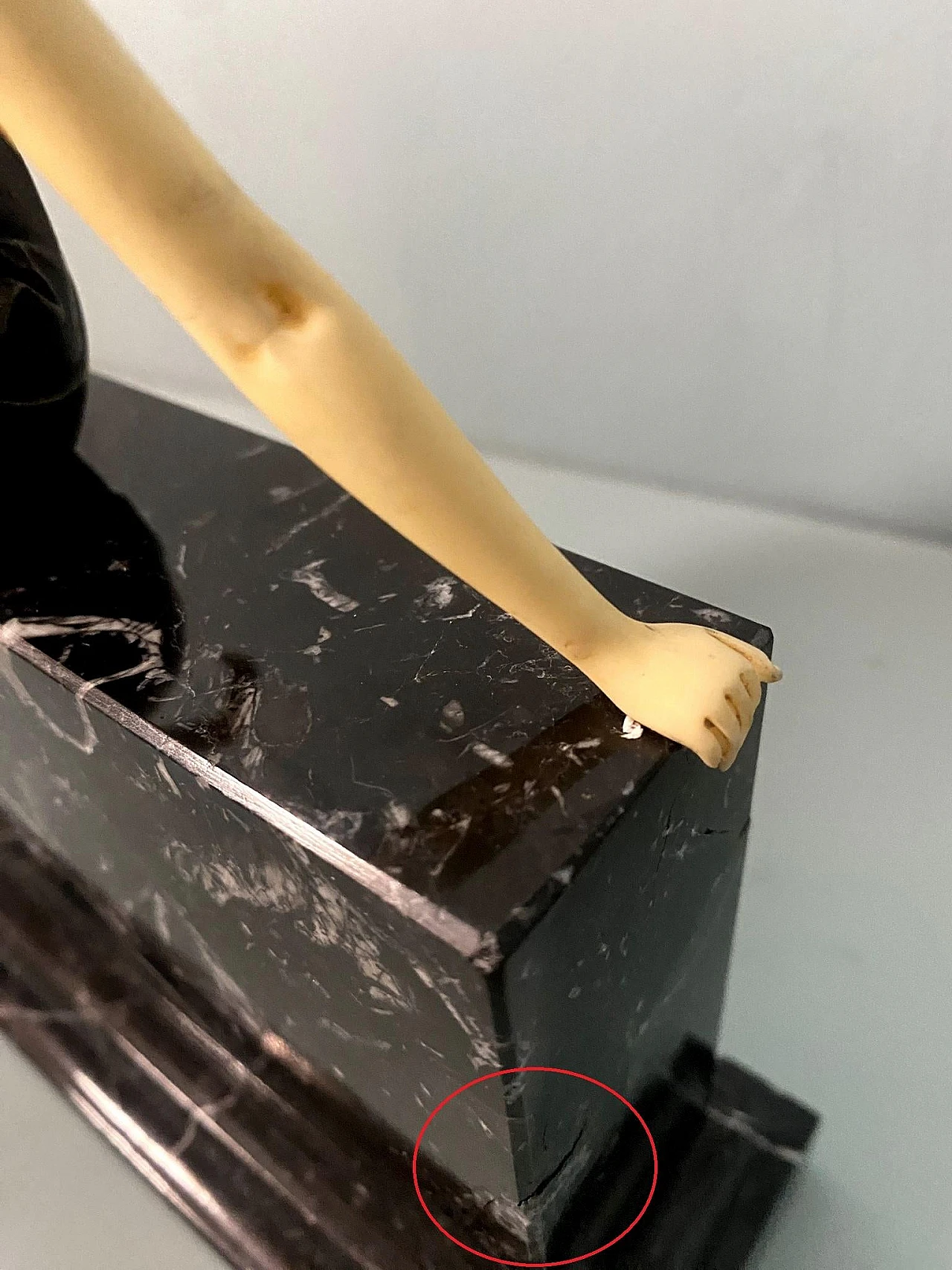
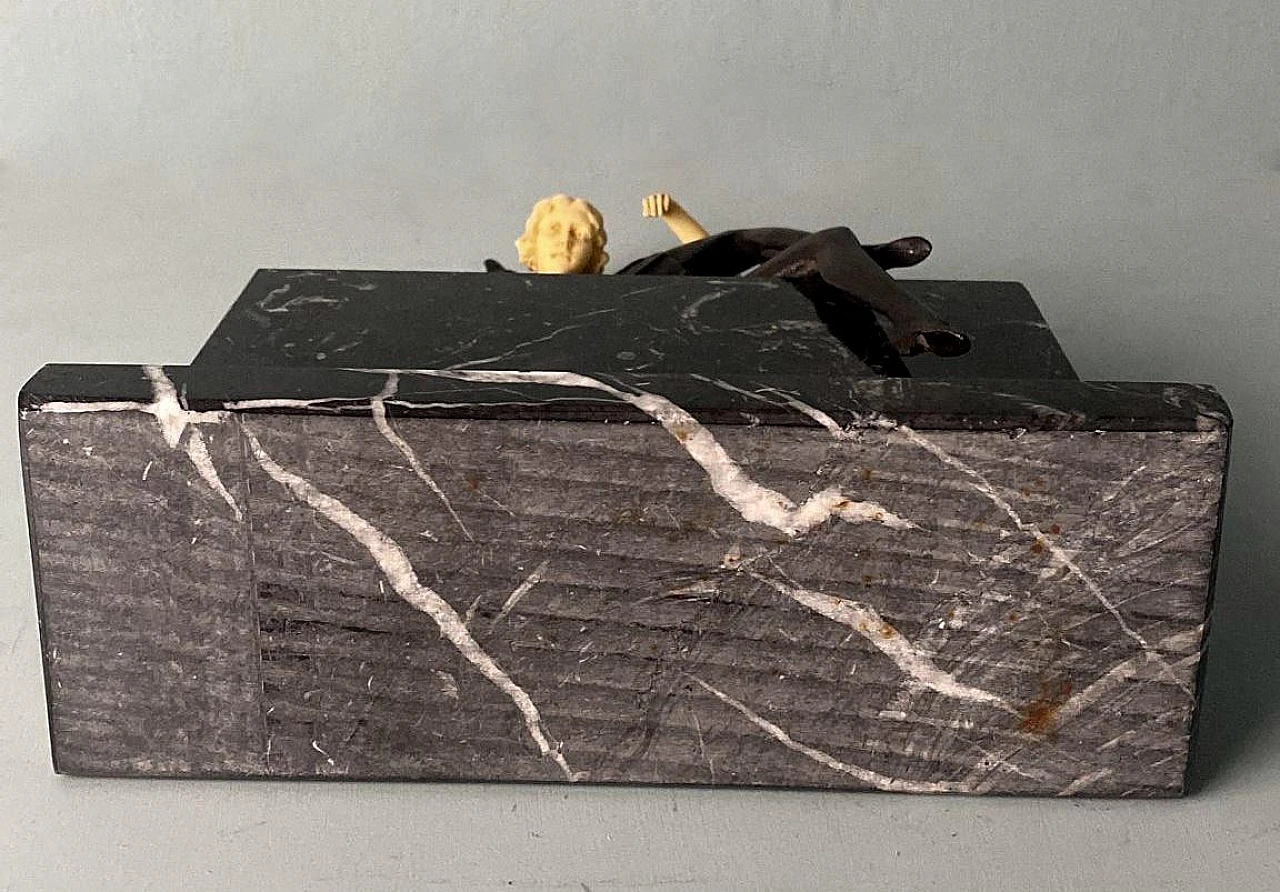
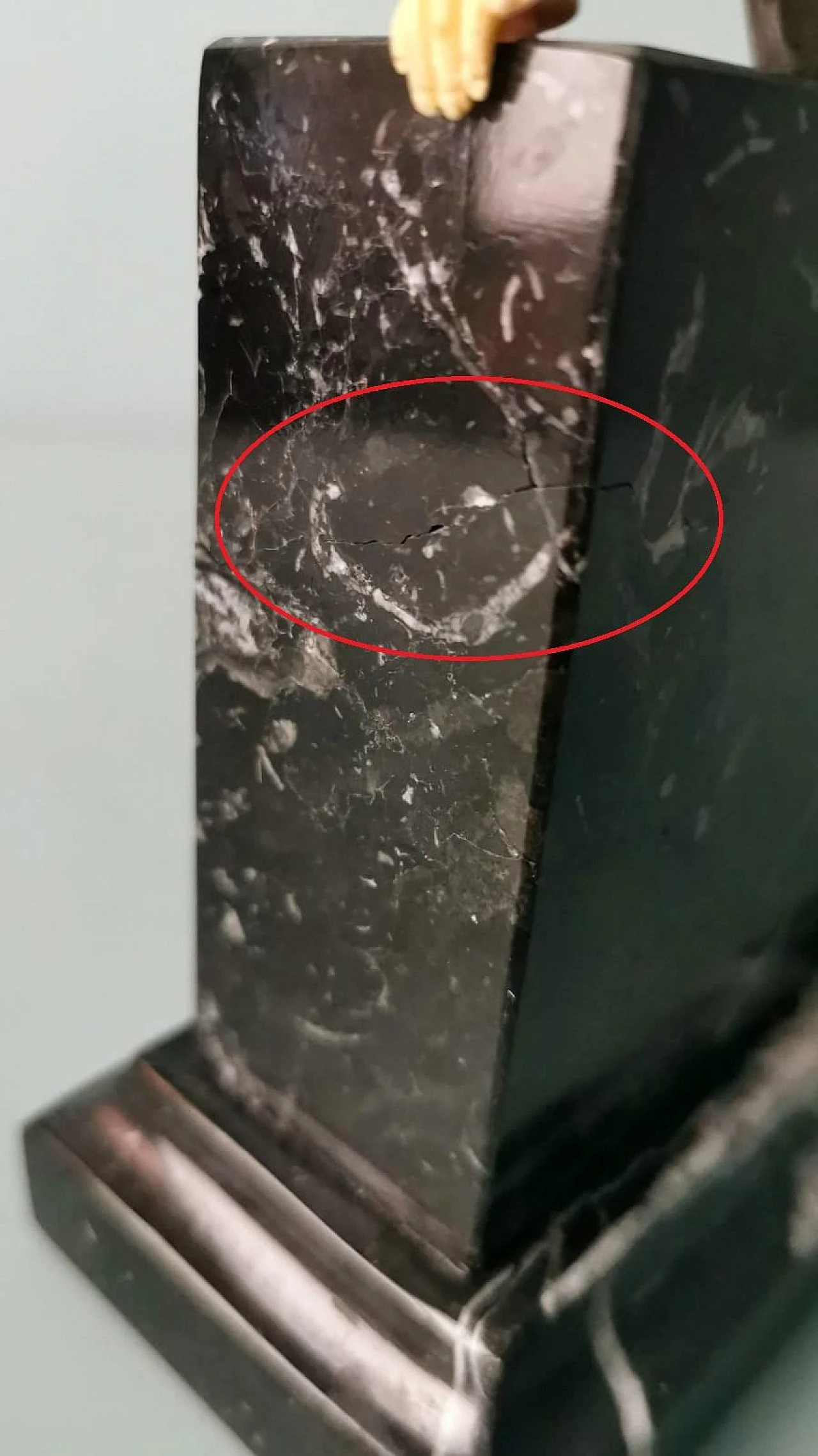



















This unique and original depiction of a young "Flapper" portrays the girl sitting in an elegant yet provocative pose, embodying the feminist icon that Flappers represent. Her body is made of bronze using the ancient lost wax casting technique, while her head and arms are made of galalith, a plant-based resin used since the early 20th century to imitate ivory. For the substantial base, the precious black Marquinia marble was used. This figurine is unsigned but is believed to have been made in a Paris workshop between 1935 and 1938 in the Art Deco style. The Flappers of the 1930s were young women who embodied a new lifestyle and fashion that emerged in the 1920s. Although their peak was reached during the Roaring '20s, their impact and influence also extended into the '30s and early '40s. Flappers were recognizable for their bold, modern clothing, such as short fringed dresses, above-the-knee skirts, and sleeveless dresses that defied the conventions of more conservative fashion. Their dresses often featured glittering decorations, beads and sequins. They wore short hair and wore bold makeup, with bright red lipstick, dark eyeshadow and eyeliner, and thin, arched eyebrows. Flappers were known for their rebellious and nonchalant behavior. They frequented nightclubs, danced the Charleston and drank alcohol, often in conflict with the social norms of the time, especially during Prohibition. Flappers represented a new form of female independence. They worked outside the home, earned their own money, and enjoyed greater personal freedom. Flappers symbolized a break with Victorian and Edwardian traditions. Their fashion and behavior represented a departure from the rigid social and moral norms of the past. Flappers embodied modernism and the rapid urbanization of society. These enterprising girls were often depicted in figurative art by painters, illustrators, and sculptors who portrayed them in Art Deco-style bronze and ivory or bronze and resin figurines. These figurines featured dynamic, dancing poses that reflected the energy and modernity of the era, or embodied the grace and fashion of flappers with elegant dresses and sophisticated poses. Galalith is a natural resin obtained from casein, a milk protein, and formaldehyde. It was widely used to make buttons, jewelry, pens and various other decorative and everyday items. Its ability to be easily colored and shaped made it particularly suitable for imitating natural materials such as ivory. Marquinia black marble is a high-quality, fine-grained, deep black stone material quarried from the Markina region in the Basque Country, northern Spain. It is one of the most famous and appreciated natural stones in the world and is widely used for valuable ornamental work. On the base, on the short side on the left, the marble has a superficial crack which however is not a break (see photos).
ID: 4672-1720197259-96819
